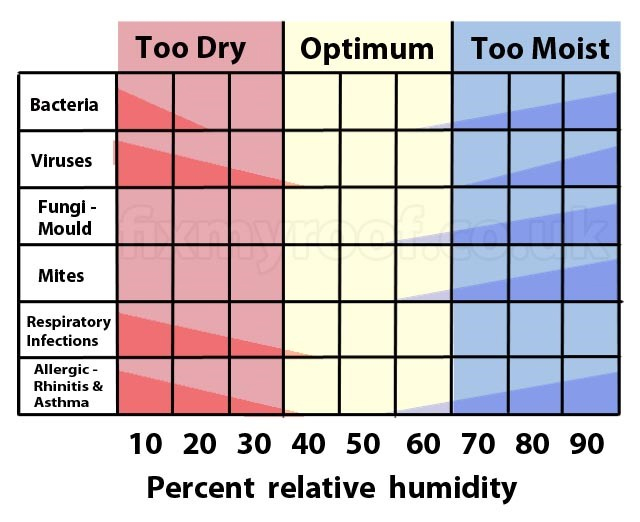It doesn't matter whether you live in a listed building or a newly built apartment - condensation can happen anywhere and have a big impact. It might have small beginnings, but if you don't deal with condensation right away it can develop into greater and longer-lasting problems. These include damp and mould, which can damage your walls and furniture, and become health hazards.
Condensation follows when warm air collides with cold surfaces, or when there's too much humidity in your home. This is specifically common in winter, when your central heating system comes on in the cooler hours of the mornings and evenings.
Top Tips
1. Heat your home - Heat evaporates moisture into the air which is a good start, it doesn't have to be a furnace, just hotter than outside, preferably above 15°C. However, despite what some people would have you believe it isn't a magic cure on its own. But, because it evaporates moisture into the air we can then ventilate it. Never heat your home with any sort of gas bottle heater. These kick out amazing amounts of moisture that add to your problems and should be avoided at all costs.
2. Ventilate - Unless you are running a dehumidifier, airborne moisture will build up inside the home from everyday living, it's now sealed in with you and needs an escape route. Open windows, even if they are only ajar an inch or two for as long as possible, an hour here or there will help, but prolonged periods are much, much better. Ventilate while you're at home or asleep as long as it's safe to do so. Trickle vents will help but may be overwhelmed on their own in winter months.
3. Avoid drying clothes indoors - This is the top contributor to humidity, condensation and black mould. Dry clothes outside whenever possible, and when it isn't, dry clothes in a closed room leaving the window open.
4. Cooking - When cooking use an extractor hood if possible if it ventilates outside. If you haven't got one or it ventilates internally then you should open the window a little while cooking, and for an hour afterwards. Close the kitchen door too if possible while cooking to stop steam entering colder rooms and forming condensation there.
5. Place lids on pans - This is such a simple thing and contributes to reducing condensation. Food cooks up to 30% faster meaning you use up to 30% less fuel. You also stop a lot of moisture being pushed into the air. It's a win win, please do this!
6. Baths and showers - A bath is a steaming mass of water and a shower consists of millions of hot water droplets. Both are evaporating moisture at an alarming rate, especially when it rises off the surface of your skin as you bathe. When you climb out, the inside of your bath, shower, or tiles will be wet and continue to evaporate after you leave, so consider wiping down any wet surfaces with a cloth and wringing it out into the sink. If you have an extractor fan run it whilst you're bathing, and for an hour afterwards. If you haven't got a bathroom extractor make sure you open those windows for at least an hour afterwards, and close the bathroom door to keep moist air from spreading to other rooms.
7. Breathing - Don't breathe! Only joking, this is tricky to cut down on, but just one person will breathe out the equivalent of up to 4 cups of water per day, so again ventilating windows is our friend. Just try to make sure any windows are locked in a vented position, especially bedroom windows at night if it's easy to enter externally, or located on a ground floor.
8. Multiple occupancy - Just when you thought it couldn't get any worse it does. Every person in the home will contribute to some or all of the above, and this multiplies your problems by the number of people of living in your house, simple as that.
9. Monitor your indoor humidity - Buy and use a cheap indoor humidity meter or hygrometer. If you combine this with the ideal indoor humidity chart further down it will seriously help you maintain a healthy indoor humidity level. Such a simple thing, yet so helpful.



